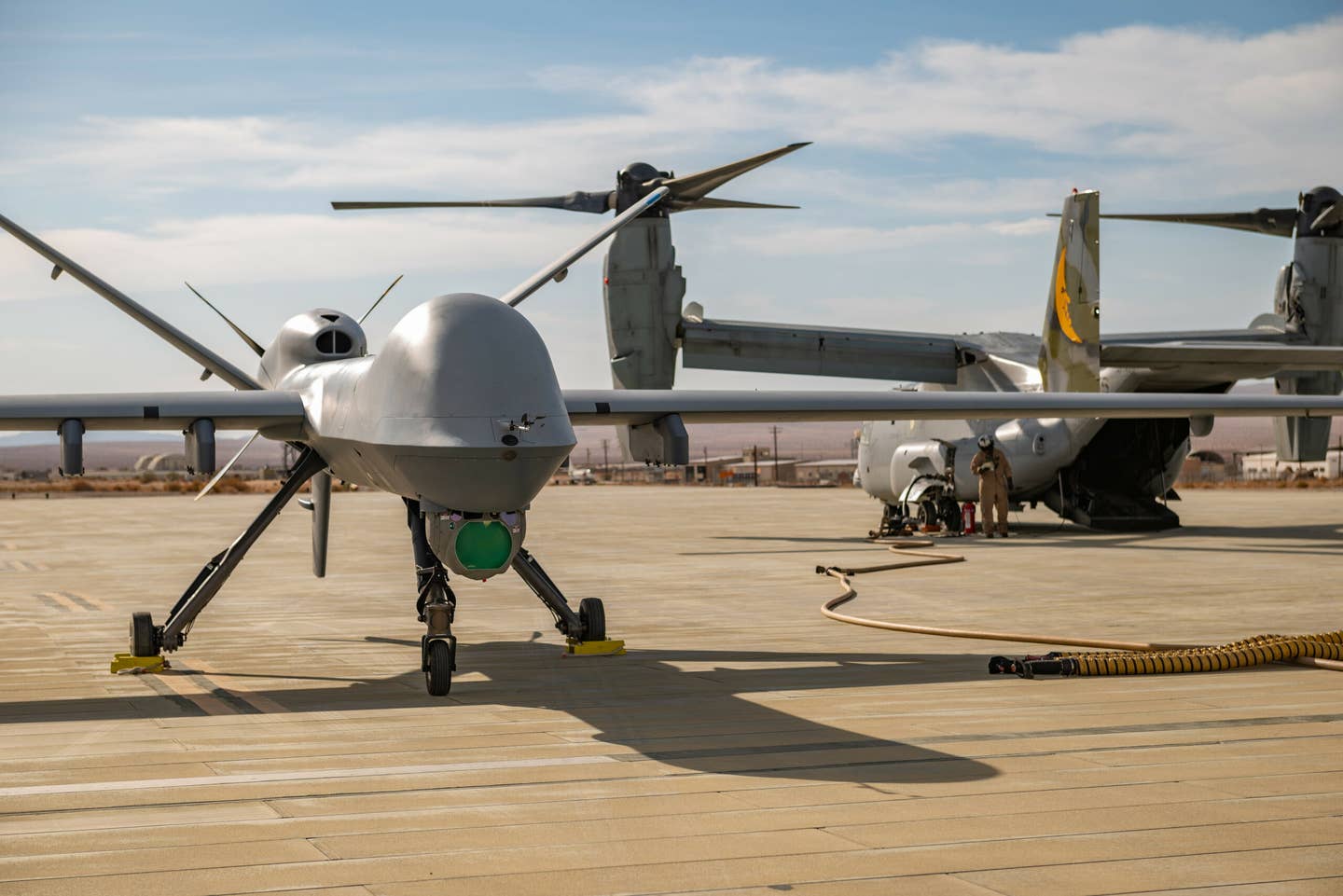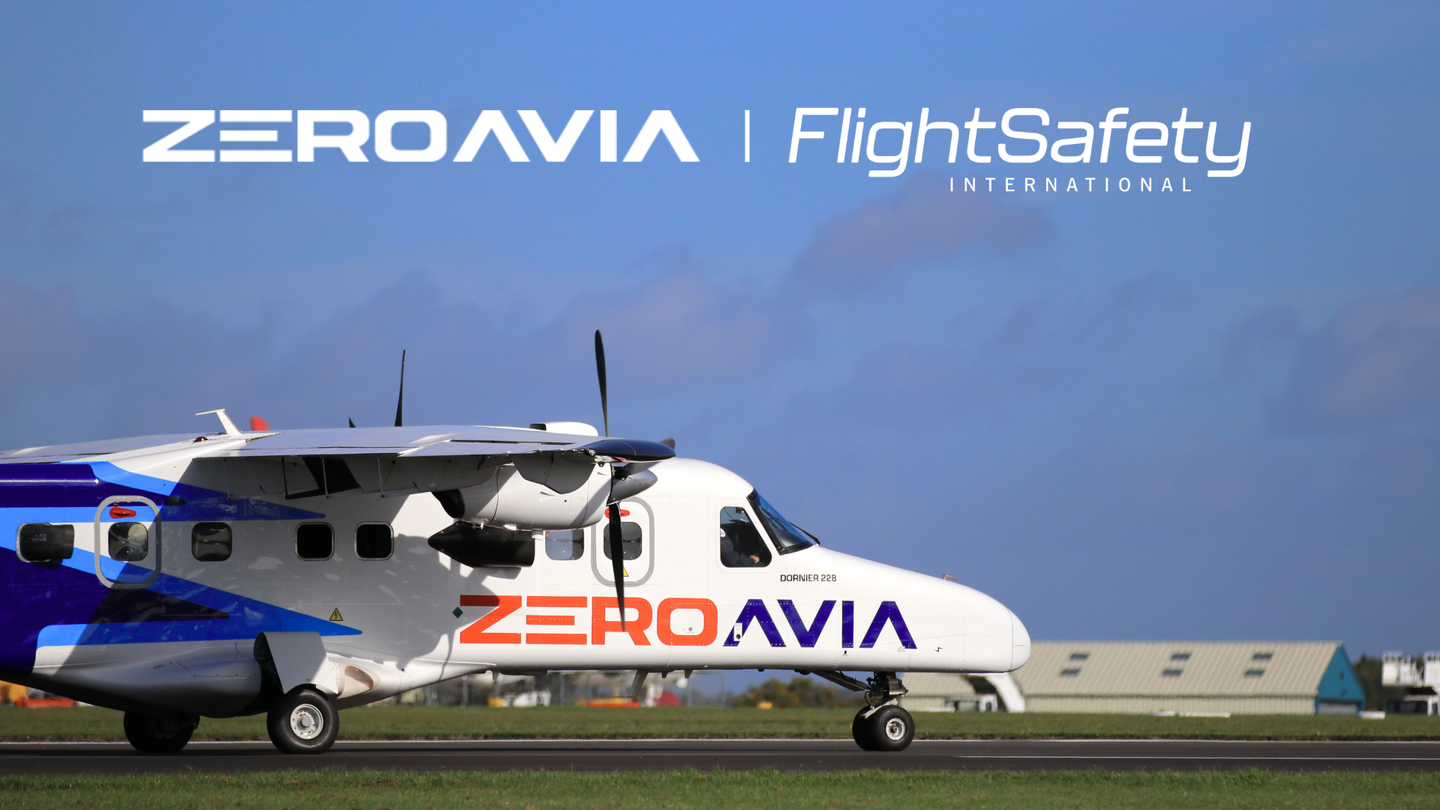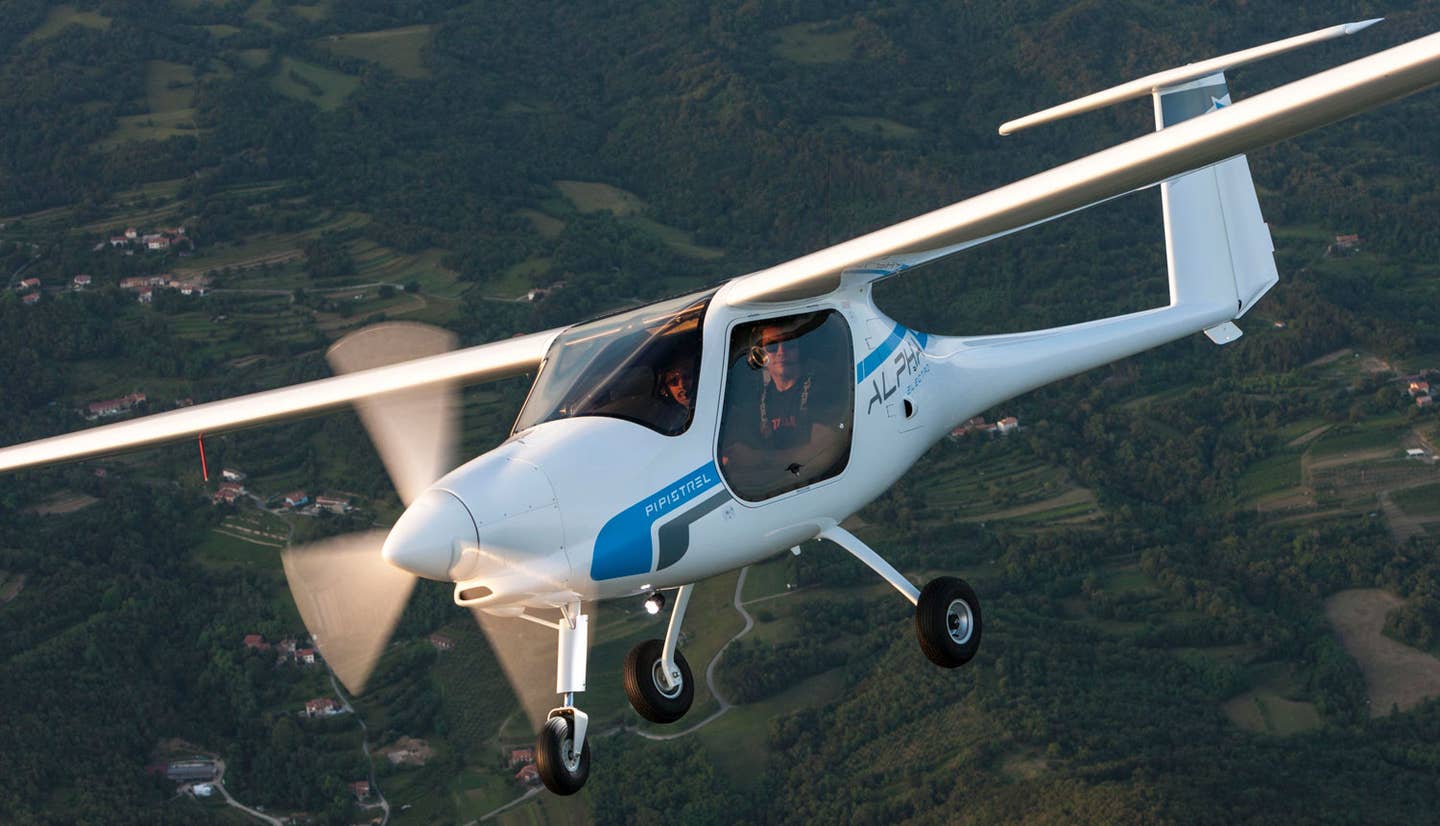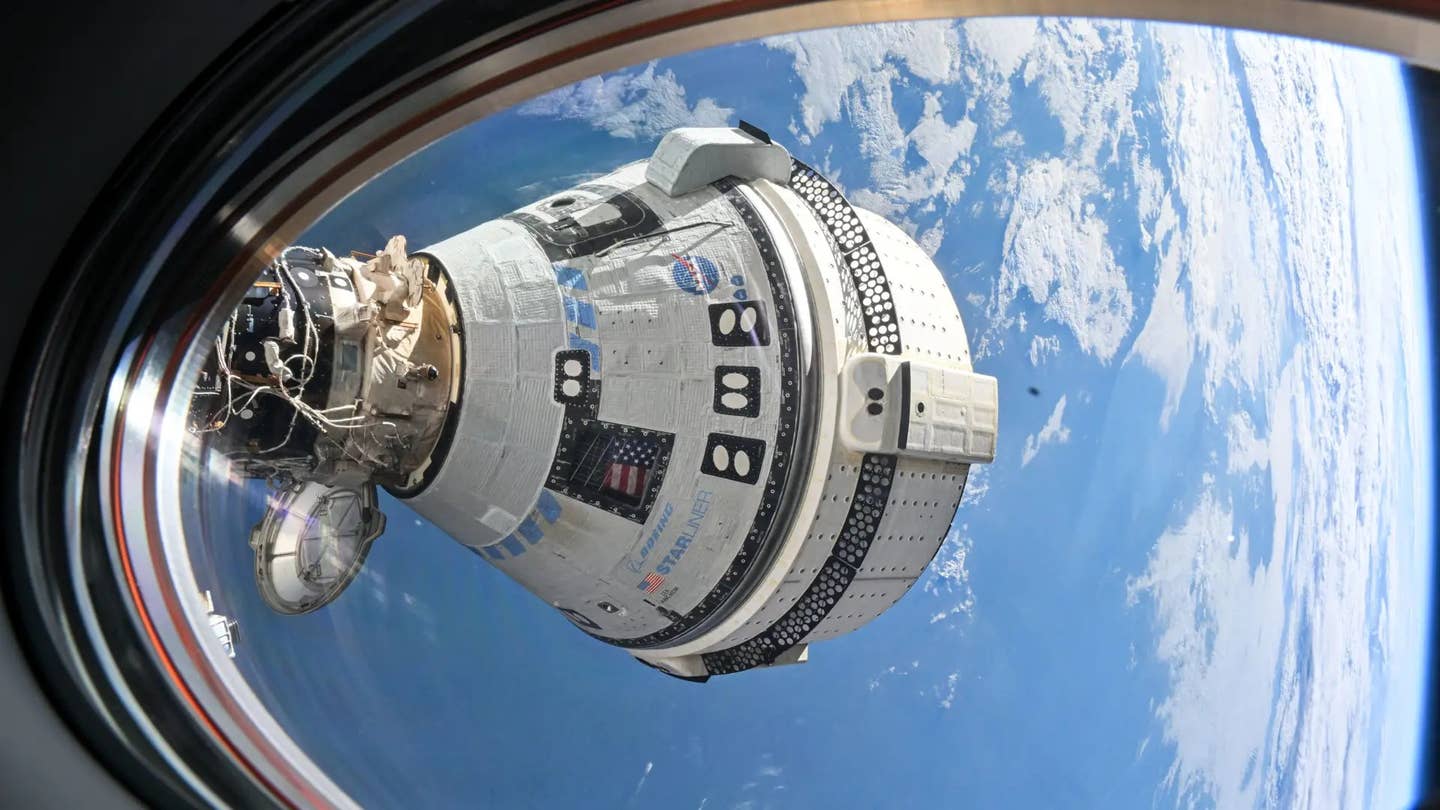Air Force, Marines Train To Make MQ-9 Reaper Expeditionary
An Air Force MQ-9 was refueled on the ground by a Marine MV-22 Osprey, marking the first time an MQ-9 received fuel from a joint platform.

An MQ-9 Reaper assigned to the 163 Attack Wing, March Air Reserve Base stages for refueling on the Strategic Expeditionary Landing Field on Marine Corps Air Ground Combat Center Twentynine Palms, California, on July 21. [Courtesy: U.S. Air National Guard / Staff Sgt. Joseph Pagan]
U.S. Marines recently topped off the fuel of a California Air National Guard MQ-9 Reaper on a Southern California airfield during a joint training exercise, marking a significant milestone.
Airmen from the 163rd Attack Wing joined Marine Medium Tiltrotor Squadron 764 in late July for the Integrated Training Exercise 4-22 held at Marine Corps Air-Ground Combat Center at Twentynine Palms, California.
As the Air Force Reaper took on the fuel delivered on the ground by a Marine MV-22 Osprey, the fuel stop became the first time an MQ-9 UAV received fuel from a joint platform. It was also only the second time a MQ-9 had received fuel from another aircraft.
The training exercise was focused on operating the UAV with the 66-foot wingspan in more austere locations, according to Air Force Maj. Shanna Ream, assistant director of operations for the 163rd Attack Wing.
"Working with the Marine Corps is very important because the Marine Corps just acquired the MQ-9. So a lot of those tactics, techniques, and procedures… we're helping to develop that," Ream said, according to a Marine Corps statement released this week.
Why It Matters
It's all part of looking ahead to future conflicts, where a joint force might need to adapt to operations away from the larger air bases that are typical for Reaper takeoffs and landings.
“Now we're making it expeditionary where we can hop to different places with a very small footprint, refuel, rearm, get back up in the air and continue supporting,” Ream said.
The UAV provides persistent intelligence, surveillance, and reconnaissance with a flight time endurance of more than 26 hours. It is also able to operate up to 45,000 feet and has a 3,850-pound payload capacity, according to its manufacturer, General Atomics Aeronautical Systems.
The drone "is an airborne quarterback to pass data," Assistant Commandant of the Marine Corps Gen. Eric Smith said during a July 18 event at the Center for Strategic & International Studies.
Last year, a Marine squadron took ownership of the Corps' first MQ-9A Reaper as a first step in transitioning the platform away from contractor owned, contractor operated (COCO) status toward government owned, government operated.
"With this transition to the MQ-9A, [Marine Unmanned Aerial Vehicle Squadron 1 (VMU-1)] is currently engaged in executing maritime domain awareness operations in highly contested areas, providing friendly forces a multi-domain reconnaissance capability across the electromagnetic spectrum," the 3rd Marine Aircraft Wing said at the time. "Moreover, it proves that VMU-1 is uniquely positioned to enable naval and joint force targeting from a remote location by a Marine aviator and sensor operator, while the aircraft is physically located within another combatant commander’s area of operation."
Marines had leased two Reapers from General Atomics ASI since 2018 under the COCO agreement, and they were transferred to the service in October. During the span of the lease agreement, the UAVs racked up more than 12,000 flight hours, General Atomics said.
The Corps intends to buy an additional 16 of the UAVs, according to the company.

Sign-up for newsletters & special offers!
Get the latest FLYING stories & special offers delivered directly to your inbox






